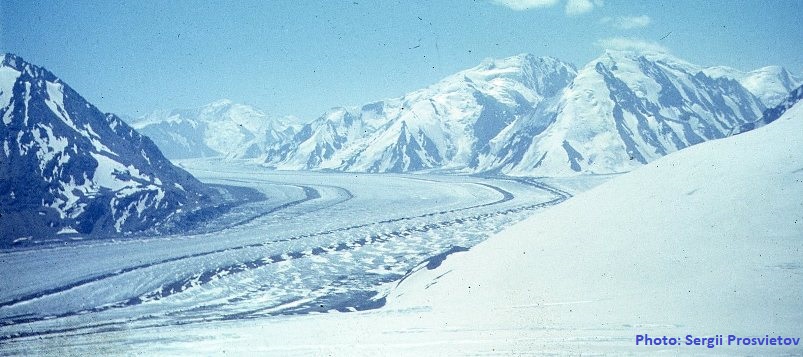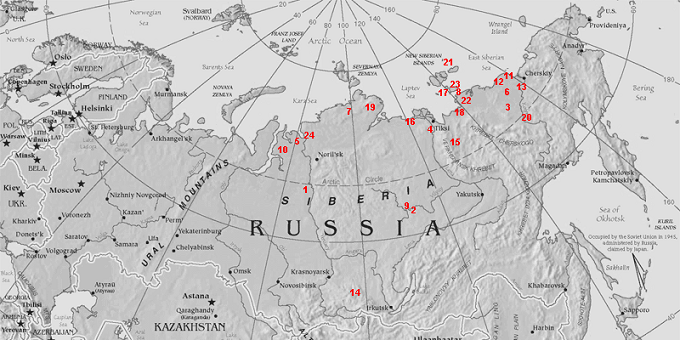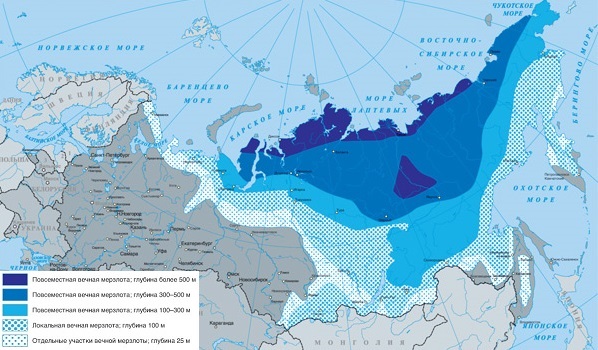
Coldness Has a Memory
This is a true story about why the mammoths died out, and where it came from and when the permafrost melts
2019-07-07 18:56
Information does not disappear without a trace. Obeying the universal laws of conservation, once arisen, it is transformed from one type to another. Just as computer information is copied from one type of media to another without changing its informational essence.
Why did the mammoths die out?
If we assume that the hypothesis of the giant ice tsunami was sufficiently substantiated by me in the story "Stones have their own memory", let us try to explain with its help any of the mysterious natural phenomena. Let's test our hypothesis in practice, which, as we know, is a criterion of truth.
Let's start with one of the most intriguing secrets in the history of the Earth - the mystery of the sudden extinction of mammoths.
I will not repeat the textbook "truths" about mammoths, many of these truths, as you will understand later, are not quite right. The main reason for the extinction of mammoths modern science considers the mass destruction of their people. Such a belief is based on the completely indisputable facts that numerous remains of mammoths were found near the settlements of primitive people, and the homes and tools of our primitive ancestors were made of the bones and tusks of these giant mammals.
This is a typical scientific mistake when wrong conclusions are made on the basis of completely accurate source data. I will try to prove it.
I will not offer adherents of the idea of extermination of mammoths by man to gather together and try to attack at least one herd of ordinary wild elephants. I assure you that as a result of this scientific experiment, supporters of classical scientific views on the problem of the extinction of mammoths would be much less.
I propose a more humane idea. Let's look at the problem of extinction of the mammoths in terms of my hypothesis about the glacial tsunami from the Arctic Ocean.
It is precisely known that mammoths lived on Earth for about one and a half million years, but in a historically short period of time — approximately 10,000–20,000 years ago, they completely died out. Well-preserved mammoth carcasses were found in the permafrost.
There are dozens of places of mass burial of the remains of mammoths, where whole and broken bones of hundreds of mammoths and other animals are concentrated. In some cases, near the numerous remains of mammoths, traces of the sites of primitive people were found who built their homes and constructed tools of labor from the tusks and other mammoth bones.
The history of frozen mammoths
In 1900, in the valley of the Berezovka River, the right tributary of the Kolyma River, the mammoth's body was found, which is well preserved in the permafrost. This fact does not constitute a riddle of nature: in the permafrost, the find was kept frozen and could be saved untouched for many tens and hundreds of thousands of years.

Mysteriously here is what: in the mouth of the found mammoth remains of not chewed grass. The condition of the stems and seeds of this vegetation indicate that death overtook a gigantic prehistoric animal at the end of summer. And this mammoth died obviously not from hunger.
And this is where the mysteries of nature is begining:
-
1. If the mammoth died unexpectedly in the warm season, why it was not eaten by prehistoric predators or did not decompose, as it should be in summer?
-
2. How did the body of a mammoth plunge into permafrost?
But everything falls into place, if we assume that the Berezovsky mammoth was hit by an ice avalanche flying from the north, and instantly frozen under a gigantic layer of polar ice. Over time, under a thick ice sheet, the earth froze and permafrost formed, ensuring the safety of the mammoth remains after the glaciers melted.
The carcass of Berezovsky mammoth survived due to the fact that at the time of the disaster he was under the cover of the high bank of the river. And the fact that the mammoth, suddenly was overwhelmed with earth and ice, indicates a strange posture in which it was found - lying on his stomach, as well as fractures of the pelvis and shoulder bones of the unfortunate animal.
And what happened to the rest of the mammoths?
They suffered an even more terrible fate. They were shot down and crushed by ice flying at the speed of an express train. It is their broken and crushed bones that researchers find in the mass graves of ancient animals.
Of course, not all the mammoths died in this catastrophe. Those animals that did not fall directly under the ice strike soon died from the cold and lack of fodder caused by a cold snap. In addition, for some time fresh water could be filled with salty ocean water brought by the tsunami.
The surviving scattered groups of mammoths could not restore the former number of their population, and soon the Siberian giants went into oblivion.

It is possible that in our views the habitat of mammoths in Siberia is greatly exaggerated, as we judge it by the found remains of extinct animals. But the remains could be separated by moving at high speed ice for many hundreds of kilometers to the south.
This was followed by the era of melting ice, and powerful streams of thawed water moved bones and frozen carcasses of whole animals over long distances to the north. Probably this explains the fact that the places of the main finds of the remains of mammoths are concentrated in the lower reaches of the major Siberian rivers along whose beds the meltwater was returning to the Arctic Ocean, as well as in the coastal zone of the Arctic Ocean.
In the memoirs of the merchant Ivan Lyakhov, the discoverer of the Novosibirsk islands in the Arctic Ocean, it is said that "on the Bolshoi Lyakhovsky island a lot of mammoth bones were found — so many that the whole island seemed to be made up of them; between them they saw heads and horns similar to buffaloes".
Probably, on the New Siberian Islands, animal bones deposited into the ocean by the large Siberian rivers Lena, Yana, Indigirka and Kolyma during the post-glacial floods.
The dwellings of primitive people near the mass burial grounds of mammoths were built from the bones of animals that had accumulated on the banks of rivers. But primitive people didn’t and couldn’t have anything to do with the extermination of these giant mammals.
People came to the piles of mammoth bones, as a ready-made warehouse of building materials. Perhaps our ancestors even fed on mammoth meat, extracting it from melted permafrost, but they could not kill the mammoths. And there was no point in killing a ten-ton animal — after all, more accessible hunting trophies grazed around: deer, roe deer, hares, and the like, quite edible and perfectly safe representatives of primitive fauna.
I want to say that the dinosaurs that inhabited the Earth tens of millions of years ago, most likely died out for the same reason as the mammoths. In any case, this may indicate the numerous finds of remains of giant lizards in Canada. As you know, Canada is located on the coast of the Arctic Ocean and most of it is still in the zone of permafrost.
Permafrost
In order to assess the scale of the catastrophe that killed the Berezovsky mammoth and led to the extinction of not only mammoths, but also dozens of species of other living creatures, let's look at the distribution map of the permafrost of Siberia. The current permafrost is the memory about one of the ice tsunami that killed the mammoths.

The southern borders of the Siberian permafrost reach the territories of Mongolia and China. All these lands were covered with ice about 44 thousand years ago. This is the age of the Berezovsky mammoth according to radiocarbon analysis.
But the term "permafrost" is erroneous in relation to the frozen soils of Siberia and North America. Here the permafrost is far from eternal. Once it was not. Then it arose as a result of emissions of floating Arctic ice on the continental land. And, undoubtedly, once this continental permafrost will melt, since its existence is not due to the peculiarities of the climate in these latitudes, but to the consequences of phenomena of a catastrophic nature that are not systematic.
Let's look at the permafrost map of the world and compare their distribution in the northern and southern hemispheres of the Earth.

If you are guided by climatic considerations, the southern tip of the Americas, the island of Tasmania and much of New Zealand should fall into the zone of the permafrost of the southern hemisphere. However, these territories are dominated by quite moderate climate. And permafrost occurs only in ice-covered Antarctica, where this permafrost is truly perpetual.
And in the northern hemisphere, permafrost should cover most of Europe. However, a temperate climate prevails in Europe.
Not uniform distribution of permafrost indicates that its presence is not predetermined by the geographical latitude and climatic features, but by catastrophic phenomena on our planet.
At one time, the European part of our continent, like Eastern Siberia, survived a glacial blow. I wrote about this in the story "Ukrainian Ice Age". But since then, not only ice has melted, but also permafrost. That once again shows that the permafrost in our latitudes is not eternal.
The floating ice of the Arctic Ocean left traces of its merciless attacks along the entire Arctic coast and far beyond its borders in the depths of continental land. This is a large-scale, but not the only evidence of ice accidents.
The consequences of the ice tsunami are preserved for millions of years and for tens of thousands of years they change the territories they are under. They wash the high mountains into the sand, freezing the ground hundreds of meters deep. They kill all living things on their way and in the nearest district.
The powerful blows of the Arctic ice for tens of millennia determined the conditions of life and survival on entire continents. But about how they have affected our reality, we will talk next time.
Каждый ваш вклад имеет большое значение. Поддержите независимые научные исследования автора и помогите более глубоко изучать важные темы сегодняшнего дня
Пополнить банку на независимые научные исследования
Просмотров всего: 25369 Просмотров сегодня: 69

Coldness Has a Memory

Law of Ukraine "On Protection of Personal Data" of 01.06.2010 № 2297-VI